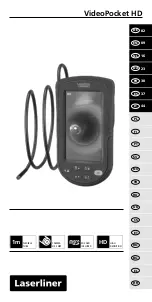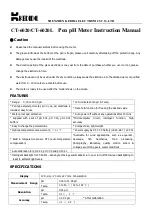
Technical Description
10
2
Technical Description
2.1
System Description
Due to its high measurement resolution and accuracy, the high voltage measuring
bridge HVB 10 is supposed to be used to prelocate faults of the primary insulation that
are difficult or impossible to locate using other methods like a pulse reflection
measurements. Typical examples are high-resistive conductor faults in paper insulated
(PILC) cables, faults in very long cables (long fault distance) and faults in cross-bonded
cable systems.
Furthermore, the system permits in the easiest way the testing of cable sheaths and
prelocation and pinpointing of cable sheath faults.
To test the integrity of the inner cable insulation or the sheath, the HVB 10 works in test
mode with a voltage of up to 10 kV kV (negative polarity).
The prelocation of a detected fault takes place using the voltage drop method, in which
the current, voltage and resistance before and after the fault location are determined
and considered in relation to the cable length. The necessary measuring and calculation
steps take place automatically and, after a few seconds, the distance to the fault is
displayed. Due to the bipolar measurement, falsifying thermoelectric and galvanic
influences can be detected and mathematically eliminated.
For sheath fault pinpointing, the device provides several possibilities. One of these is a
pulsed DC output voltage, which is used in combination with an earth fault locator as the
ESG to locate the sheath fault by the step voltage method. A second method is to
pinpoint the fault with a so-called A-Frame while the HVB 10 transmits a low frequency
(3 or 4.8 Hz) signal.
If the device is equipped with the “AF” option it simultaneously transmits a 8.44 kHz
audio frequency signal into the cable when working in pinpointing mode.
Intended use
Function
Содержание HVB 10
Страница 1: ...1 HVB 10 High Voltage Measuring Bridge USER GUIDE Issue 04 01 2019 EN Article number 83041...
Страница 2: ...2...
Страница 6: ......











































